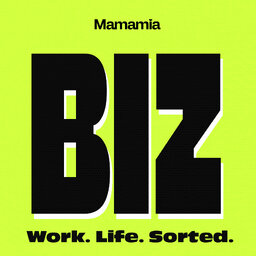How To Build A Profitable Side Hustle (From Someone Who Actually Did It)
Whether you're looking to earn extra cash or dream of quitting your day job, this conversation delivers the practical blueprint you've been searching for.
We meet creative entrepreneur Georgia Norton Lodge who offers brutally honest advice about what it actually takes to build a sustainable side hustle. She shares the exact steps that helped her transform a $35 product into a $500 one, and how a single email to her database once made her $16,000.
Plus you’ll learn:
- the Venn diagram approach to identifying your perfect side hustle
- six practical steps to get started (even with no time or budget)
- realistic timelines and expectations
- when to know if your side hustle is working (or when to let it go)
Check out Georgia’s courses and workshops, and you can follow her on LinkedIn and Insta.
Sign up to the BIZ newsletter here
You might be interested in our episodes on:
How To Talk So People Listen To You
How To Be More Productive (Without Trying Too Hard)
Time Blocking Doesn't Work (Until You Do It Right)
How To Ask For More Money (Without Dying From Awkwardness)
THE END BITS
Support independent women's media.
Follow the Biz Instagram, Michelle’s startup Sunroom and Soph’s career coaching business Workbaby.
Got a work life dilemma? Send us all the questions you definitely can't ask your boss for our Biz Inbox episodes - send us a voice note or email us at podcast@mamamia.com.au. You can remain anon!
HOSTS: Michelle Battersby, Soph Hirst and Em Vernem
EXEC PRODUCER: Georgie Page
AUDIO PRODUCER: Leah Porges
Mamamia acknowledges the Traditional Owners of the Land we have recorded this podcast on, the Gadigal people of the Eora Nation. We pay our respects to their Elders past and present, and extend that respect to all Aboriginal and Torres Strait Islander cultures.
 BIZ
BIZ


